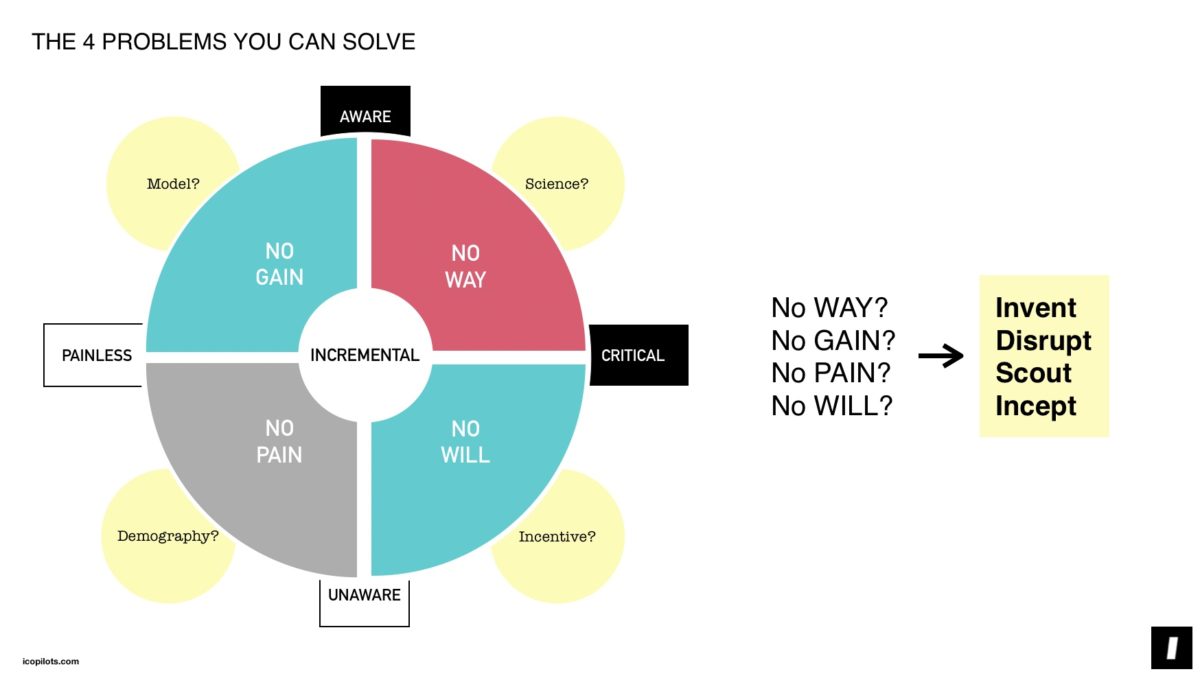🔳 Framing the problem you are solving

I wrote in 2016 about one of the tools we use to define the four types of problems innovators focus on. As I explained then, this kind of tool is admittedly a cheap sleight of hand. We reduce the complexity of the market to just four simple options. But this is exactly why these tools are important; they force you to focus and not stay in a zone where everything is still an option.
Here’s another version that we use more broadly with startups and industrials. This is usually the one I also work on during my executive MBA class:

In each of the four zones you can end up working in, answers to a specific logic:
- Define if the problem is critical to solving for your customer.
- Assess if the customer is actually aware of the problem or not.
- Adapt your strategy in regard to the quadrant you end up being in.
For example, if you are in a market position where the customer’s problem is “Critical x Aware,” you’re in the “No WAY” zone.
In that case, the only reason it’s still a problem is that most of the time, the problem is technically impossible to solve (at the time). Solve climate change? Sure, let’s plug in 100% cheap renewable energy everywhere… Oh, wait… This kind of problem requires that you focus on inventing a technical solution that is not there yet. And because it’s critical and everyone is aware of it, it will be a “red ocean,” which requires an inventor mindset. Problems that French, Japanese, or German cultures are quite apt to solve.
Some of the other zones are less obvious (and more interesting?).
For instance, the “No WILL” zone is where the customer is unaware of a critical problem. How can this be possible? Here’s how: the average cost of owning, maintaining, and operating a car in Europe is, on average, around €12,000 a year. Typically a very critical budget problem that European consumers love not to see. This will again call for a different type of mindset to solve, which will not be easy to find in the cultures I cited previously…
And so on…
These kinds of tools are important in our practice. They reduce innovation complexity to a few viable options with, each one of them, a specific logic and mindset. And in our experience, reducing complexity to get to the bone of the underlying innovation project is the key success factor.



